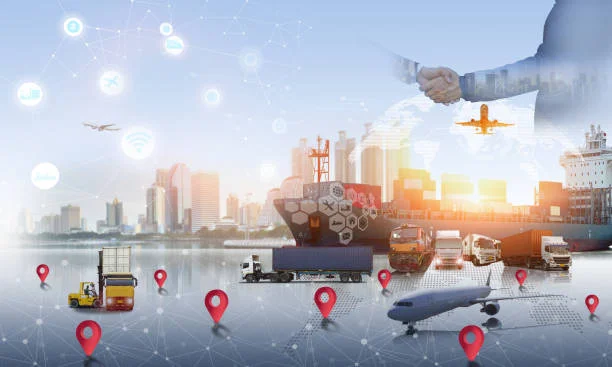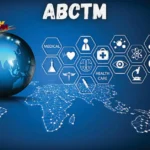In today’s hyperconnected world, efficiency and visibility are essential for businesses that rely on logistics and supply chain operations. The growing demand for faster deliveries, accurate inventory management, and improved customer satisfaction has pushed companies to explore advanced technologies. Among these innovations, the Internet of Things (IoT) stands out as a transformative force.
By enabling real-time data collection and communication across connected devices, IoT is redefining how supply chains function, delivering better transparency, efficiency, and cost savings.
Continue your journey—this related post adds more value to your time.
IoT: Transforming the Supply Chain Landscape
At its core, IoT refers to a network of devices—such as sensors, trackers, and smart machines—that collect and exchange data through the internet. When applied to logistics and supply chains, these devices create an interconnected ecosystem where every stage of the process, from procurement to last-mile delivery, can be monitored and optimized.
This shift has allowed businesses to move away from reactive strategies and adopt proactive, data-driven approaches that enhance performance across the board.
Enhanced Real-Time Visibility
One of the most significant benefits of IoT in logistics is real-time visibility. Traditionally, companies faced delays in tracking shipments or managing stock due to limited access to timely data. With IoT devices embedded in containers, pallets, and vehicles, businesses now have a constant stream of updates on the location and condition of goods.
This visibility empowers companies to track the movement of inventory across the supply chain, ensuring accurate delivery estimates, reducing delays, and enhancing overall customer satisfaction. For industries that deal with sensitive goods, such as pharmaceuticals or fresh produce, sensors can monitor temperature and humidity to maintain quality during transit.
Optimizing Warehouse Operations
Warehouses are at the heart of supply chains, and IoT is revolutionizing how they operate. Smart sensors and automated systems improve inventory management by providing accurate, real-time data on stock levels. This eliminates manual errors and ensures that businesses maintain optimal inventory without overstocking or understocking.
IoT-enabled robots and automated guided vehicles (AGVs) are also being used to speed up picking, packing, and restocking processes. These solutions improve operational efficiency, reduce labor costs, and allow businesses to process larger volumes of orders without compromising accuracy.
Data-Driven Route Optimization
For logistics providers, route optimization is critical to reducing costs and ensuring timely deliveries. IoT devices installed in delivery vehicles collect data on traffic patterns, weather conditions, and driver performance. This information is analyzed in real time to suggest the most efficient routes, saving both time and fuel.
By leveraging these insights, companies can enhance delivery accuracy, lower transportation expenses, and improve sustainability by reducing their carbon footprint.
Predictive Maintenance for Reduced Downtime
Equipment downtime can be costly in logistics operations, particularly when it comes to delivery vehicles or machinery used in warehouses. IoT enables predictive maintenance by monitoring equipment performance and identifying early signs of wear and tear.
For example, sensors can track engine health, tire pressure, and fuel consumption in trucks, sending alerts before a breakdown occurs. This proactive approach reduces unexpected downtime, lowers repair costs, and ensures that operations continue running smoothly.
Improved Supply Chain Transparency
Supply chain transparency is increasingly becoming a priority for businesses and consumers alike. IoT enables complete traceability by capturing detailed information about every step in the supply chain. From raw materials to the final product delivery, companies can track how and where their goods move, ensuring accountability and compliance with regulations.
This transparency also supports sustainability initiatives, as businesses can monitor environmental conditions during transportation and implement eco-friendly practices to reduce their carbon impact.
Integration with Smart Label Tracking
A key innovation that complements IoT in logistics is smart label tracking. These labels, embedded with advanced sensors and connectivity features, provide detailed information about a product’s journey in real time. By integrating these smart labels with IoT platforms, businesses can achieve unparalleled visibility and control, ensuring accurate delivery, minimizing errors, and improving the customer experience.
Enhancing Customer Experience
Modern customers expect fast, reliable, and transparent delivery services. IoT bridges the gap between logistics providers and customers by offering accurate delivery updates, real-time package tracking, and proactive notifications in case of delays.
This level of communication not only improves customer satisfaction but also builds trust and loyalty, giving companies a competitive edge in a crowded market.
Challenges and Considerations
Despite its many advantages, adopting IoT in logistics and supply chain operations comes with challenges. Data security and privacy are significant concerns, as the increased number of connected devices creates more potential entry points for cyberattacks.
Additionally, integrating IoT systems with existing infrastructure can be complex and costly, particularly for smaller businesses. To maximize ROI, companies must carefully plan their IoT strategy, choose scalable solutions, and invest in employee training.
The Future of IoT in Logistics
The future of IoT in logistics and supply chain management is promising. Advances in artificial intelligence, 5G connectivity, and blockchain technology will further enhance IoT capabilities, making operations even more efficient and secure.
As businesses continue to prioritize speed, accuracy, and sustainability, IoT will remain a key driver of innovation, helping organizations stay competitive in a rapidly evolving market.
Conclusion
IoT is no longer a futuristic concept in logistics—it is a present-day necessity. From enhancing real-time visibility to enabling predictive maintenance and smart automation, IoT empowers businesses to streamline their operations and deliver exceptional customer experiences.
By embracing this technology, companies can optimize their supply chains, reduce costs, and build a foundation for long-term growth in an increasingly connected world.
This featured post is trending for a reason—see what everyone’s reading.






